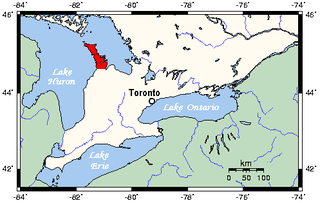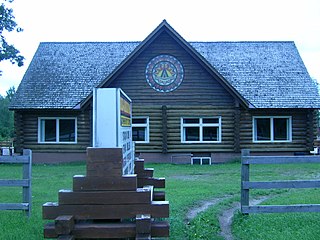FIRST—Pamequonaishcung and his Band, a tract of land to commence seven miles, from the mouth of the River Maganetawang, and extending six miles east and west by three miles north.
SECOND—Wagemake and his Band, a tract of land to commence at a place called Nekickshegeshing, six miles from east to west, by three miles in depth.
THIRD—Kitcheposkissegan (by Papasainse), from Point Grondine westward, six miles inland, by two miles in front, so as to include the small Lake Nessinassung a tract for themselves and their Bands.
FOURTH--- Wabakekik, three miles front, near Shebawenaning, by five miles inland, for himself and Band.
FIFTH—Namassin and Naoquagabo and their Bands, a tract of land commencing near Qacloche, at the Hudson Bay Company's boundary; thence westerly to the mouth of Spanish River; then four miles up the south bank of said river, and across to the place of beginning.
SIXTH—Shawenakishick and his Band, a tract of land now occupied by them, and contained between two rivers, called Whitefish River, and Wanabitaseke, seven miles inland.
SEVENTH—Windawtegawinini and his Band, the Peninsula east of Serpent River, and formed by it, now occupied by them.
EIGHTH—Ponekeosh and his Band, the land contained between the River Mississaga and the River Penebewabecong, up to the first rapids.
NINTH—Dokis and his Band, three miles square at Wanabeyakokaun, near Lake Nipissing and the island near the Fall of Okickandawt.
TENTH—Shabokishick and his Band, from their present planting grounds on Lake Nipissing to the Hudson Bay Company's post, six miles in depth.
ELEVENTH—Tagawinini and his Band, two miles square at Wanabitibing, a place about forty miles inland, near Lake Nipissing.
TWELFTH—Keokouse and his Band, four miles front from Thessalon River eastward, by four miles inland.
THIRTEENTH—Mishequanga and his Band, two miles on the lake shore east and west of Ogawaminang, by one mile inland.
FOURTEENTH—For Shinguacouse and his Band, a tract of land extending from Maskinongé Bay, inclusive, to Partridge Point, above Garden River on the front, and inland ten miles, throughout the whole distance; and also Squirrel Island.
FIFTEENTH—For Nebenaigoching and his Band, a tract of land extending from Wanabekineyunnung west of Gros Cap to the boundary of the lands ceded by the Chiefs of Lake Superior, and inland ten miles throughout the whole distance, including Batchewanaung Bay; and also the small island at Sault Ste. Marie used by them as a fishing station.
SIXTEENTH—For Chief Mekis and his Band, residing at Wasaquesing (Sandy Island), a tract of land at a place on the main shore opposite the Island; being the place now occupied by them for residence and cultivation, four miles square.
SEVENTEENTH—For Chief Muckatamishaquet and his Band, a tract of land on the east side of the River Naishconteong, near Pointe aux Barils, three miles square; and also a small tract in Washauwenega Bay—now occupied by a part of the Band—three miles square.










